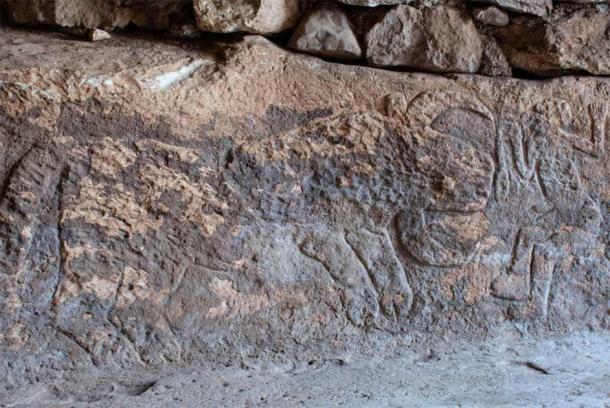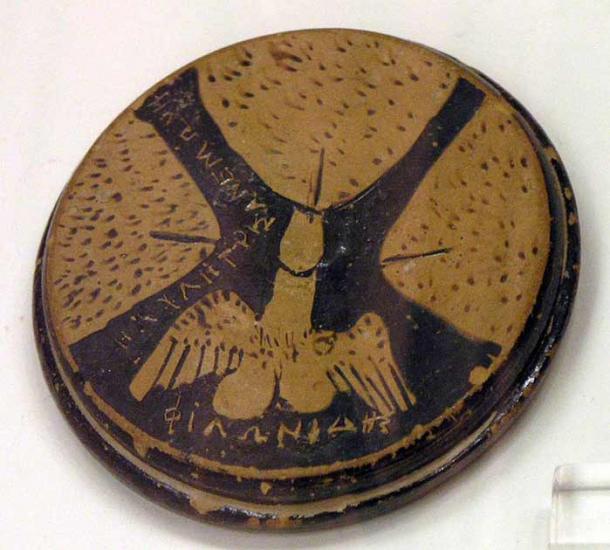The latest excavations at a Neolithic site in Turkey’s southeastern province of Şanlıurfa in the Anatolia region have brought to light a fascinating five-figure relief dating to the Neolithic period. Featuring both animals and humans, the relief is believed to be a composition. The most striking figure in this relief is a frontal depiction of a man holding his phallus. The excavations are being carried out by Istanbul University and Şanlıurfa Archeology Museum and are led by Associate Professor Eylem Özdoğan, reports Arkeonews.

The entire stone relief, with the man holding his phallus on the right. ( Arkeolojihaber)
The Phallus Relief At Turkey’s Taş Tepeler Neolithic Site
Taş Tepeler (literally Stone Hills) is a region in Anatolia, Turkey that houses a vast number of prehistoric sites including the UNESCO World Heritage site of Göbeklitepe (also spelt Göbekli Tepe). Turkey’s Ministry of Culture and Tourism together with the Turkish Tourism Promotion and Development Agency (TGA) has recently launched the Tepeler Bag project, a Neolithic heritage project, which will undertake excavations at 12 sites in the 124-mile (200 kilometer) Tas Tepeler region between 2021 and 2024.
Apart from Göbeklitepe, the Taş Tepeler sites include Karahantepe, Harbetsuvan, Gürcütepe, Kurttepesi, Taşlıtepe, Sefertepe, Ayanlar, Yoğunburç, Sayburç, Çakmaktepe and Yenimahalle. These sites are believed to be some of the earliest examples of sedentary settlements and organized and specialized labor in human history .

A man with six fingers and a snake in one hand in front of a bull with large horns, on the left side of the stone relief. ( Arkeolojihaber)
The Sayburç Depiction of Human-Animal Interaction
Sayburç was discovered in 2021 after the Şanlıurfa Archeology Museum was informed that villagers had used parts of obelisks found in the area to build their garden walls. The prehistoric settlement at Sayburç is thought to be contemporary with the last Göbeklitepe period.
The latest find in the excavations was a circular pit-bottomed building cut out of the limestone bedrock. Running along the wall of the building which is around 11 meters (36 feet) in diameter is a 1 meter (3.3 feet) high bench cut out of the bedrock. Where the covering wall of the building still stands, a small area at the rear end of the 60-70 centimeter (23-27 inch) wide bench has survived. It is on the front of this bench that the phallus relief was found.
Five figures, thought to be interrelated, are carved into the bedrock. To the east are three figures, consisting of the phallus-holding frontal male, right hand on phallus and left on his stomach, flanked on either side by a leopard. The two leopards are identical, with mouths open, teeth visible and tails held high. The triangular lines etched around the man’s neck, depicting a necklace or collar, are commonly seen in many Neolithic human figures in the region.
To the west of this scene is another human figure with its back to these three figures. This time the human, who is identifiable as a male by his extended phallus, is depicted from a side view. He faces a bull with large horns. His left arm is held up and the hand seems to have six fingers . His right hand is holding an upside-down snake. He is looking towards the bull.

This ancient Greek lid, dated to 460-425 BC, depicts three female sex organs and a winged phallus. (Μαρσύας / CC BY-SA 2.5 )
The Phallus Symbol in Early Human History
Phallus art has been found from excavations at prehistoric settlements around the world beginning with the late Paleolithic Age.
The earliest depiction is to be found scraped on a wall in the Cosquer Cave near Marseille. The cave dates to 27,000-19,000 years ago. This is the oldest phallus painting in the world, at least for now.
The earliest-known three-dimensional phallus was found in the HohleFels Cave near the city of Ulm in Germany. The phallus found here in 2005 is 20 centimeters (7.8 inches) long and 3 centimeters (1.2 inches) in diameter and dates back some 28,000 years ago.
Typically symbolizing fertility or potency, the phallus or erect male penis has been worshipped in almost every culture around the world from the earliest times and phallic architecture and carving is to be found in every geography. In fact, phallic worship continues to hold strong in many cultures even today.
Top image: The right side of the Neolithic Anatolian stone relief depicting a male figure holding his phallus in the middle with leopards on either side. Source: Arkeolojihaber
By Sahir Pandey
Related posts:
Views: 1
 RSS Feed
RSS Feed

















 October 20th, 2021
October 20th, 2021  Awake Goy
Awake Goy  Posted in
Posted in  Tags:
Tags: 
















